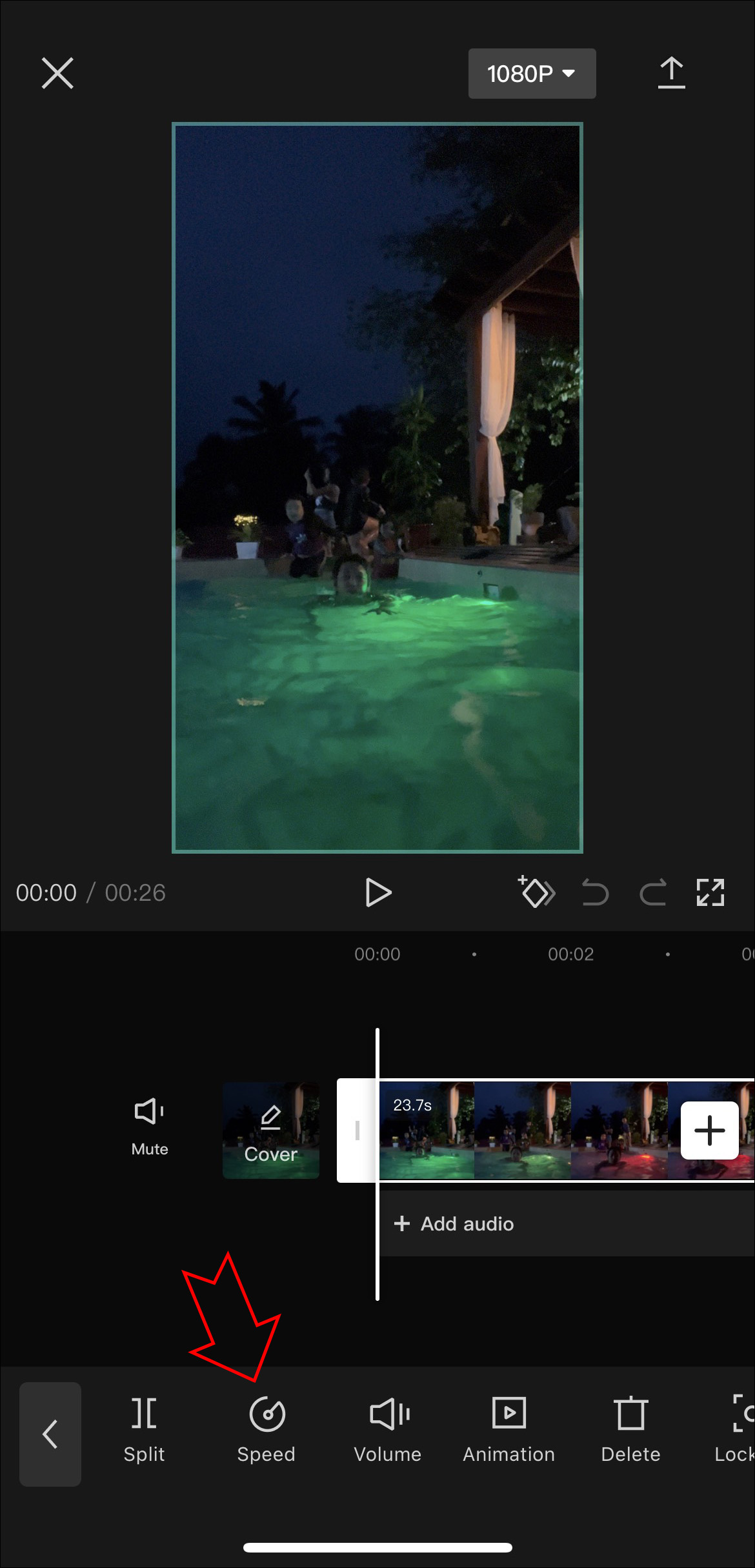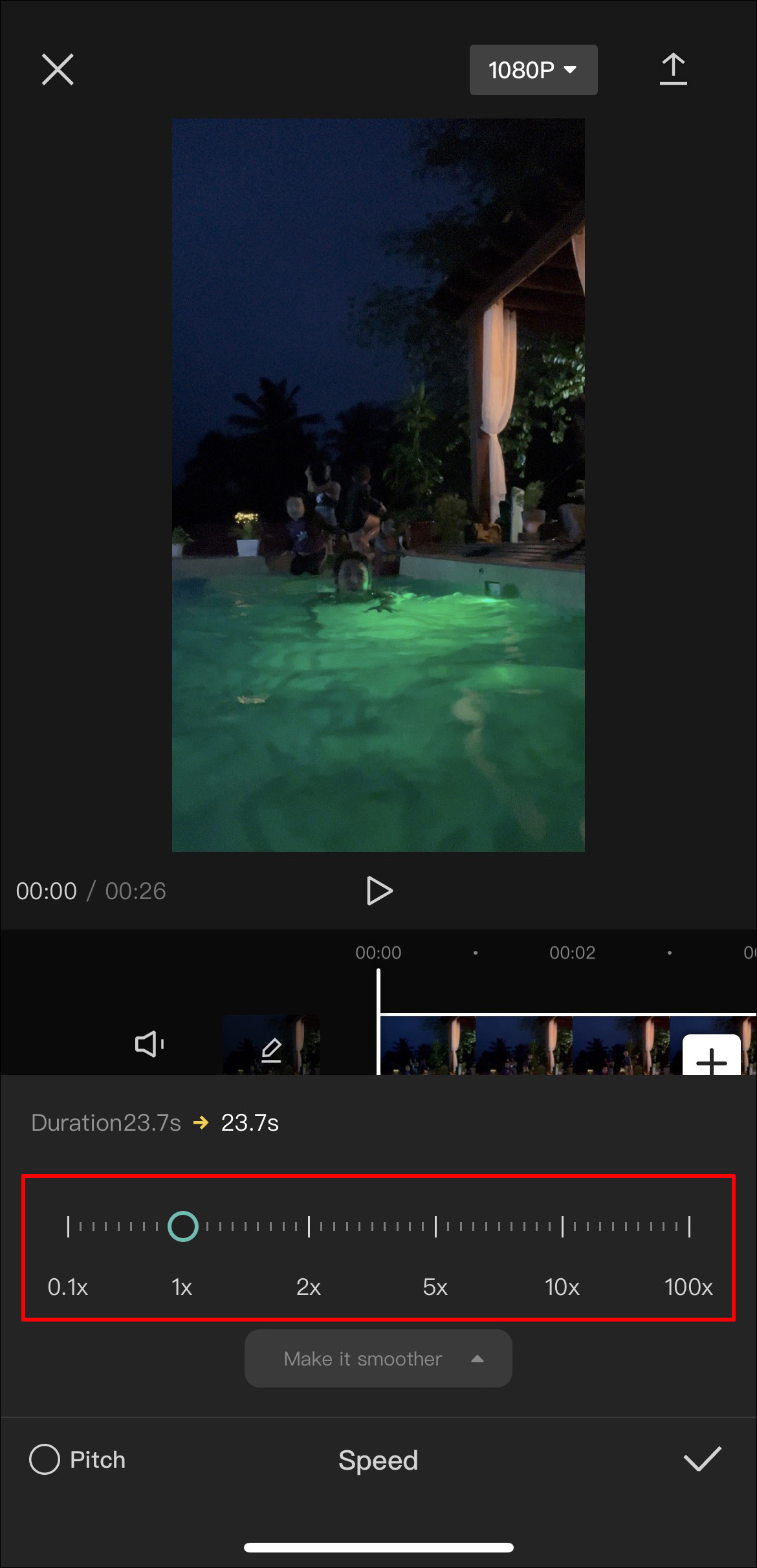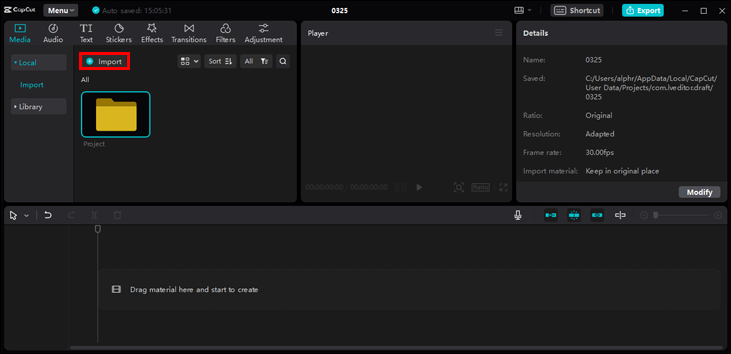While editing, you may need to speed up or slow down your videos. A fast-paced video can help you shorten the content without cropping anything out and losing quality. Alternatively, a slow-motion video can help you add interesting special effects.
Fortunately, CapCut has options allowing you to modify the video speed in both cases. This makes it a good video editing tool for social media platforms such as TikTok. In this article, you’ll learn how to change the speed on CapCut.
How to Change Speed in CapCut
CapCut offers a simple way to adjust the speed of the video to your preferences. To do so on your phone, simply follow the steps below:
- Begin by selecting a “New Project” or an existing project.

- Tap on the video to access the speed icon located at the bottom.

- Click on the speed icon to open the video speed bar.

- Use the speed bar to adjust the playback speed of the video. The available speed range is from 0.1x to 100x.

The steps above show you how you can adjust your video speed to precise levels. You can use the speed bar to experiment as well. Here’s how to use the speed bar on CapCut:
- If you want to reduce the speed of your video using CapCut, you need to swipe your finger to the left across the speed bar. As you decrease the playback speed, the overall length of your video will increase.
- To increase the playback speed of your video and play it in fast motion using CapCut, you need to move your finger to the right across the speed bar. The further you move the speed bar to the right, the faster the playback speed of your video.
Bear in mind that when using the speed bar for video editing, it will also affect the length of your video. If you have a limit for your video, this could be an issue. Slowing the video down will increase its overall length while speeding it up will reduce it. Changing the speed of the video on the CapCut Desktop App is a different process.
Here’s how it’s done:
- Open the CapCut app on your computer.

- Start a new project and click “Import” to choose a video from your computer.

- Drag and drop the imported video onto the edit bar, located at the bottom of the screen.

- In the right panel, click on the “Speed” tab and adjust the video playback speed using the “Times” slider.

Editing the speed of your CapCut videos on the desktop app can give you a better view of the editing process. The times slider can help you choose the right speed to fit your content.
How to Use Transitions on CapCut
CapCut allows you to use other effects that can be combined with modifying the video speed as well. Using the right transitions on CapCut goes hand and hand with adjusting the video speed. It can help create a polished, seamless, and professional look.
You can add transitions to your CapCut videos on the app by following the steps below:
- Select “New Project.”

- Next, select the clips you want to apply transitions to and click “Add” to add them to the timeline.

- At the intersection of the clips, select the white icon with a vertical line between them.

- Choose your preferred transition from the options available and adjust the duration of the transition by dragging the white circle across the duration line.

- Apply the transition to all the clips on the timeline by tapping on “Apply to all.”

- Click on the checkmark icon in the bottom right corner of the screen to apply the transitions.

Adding transitions to your videos is yet another tool that you can use to take your videos to the next level, but there are still others that can complement it.
How to Add Filters to Your CapCut Videos
Adding filters to your videos can give them a unique, professional look. CapCut offers a wide range of filters that you can use to enhance your videos, change the video speed, as well as the transitions.
Here’s how to do it:
- Click on the clip to select it, and then click on the “Filters” icon at the bottom of the screen.

- You’ll see a variety of filters. Swipe left or right to browse through and select one.

- Once you find a filter you like, tap on it to apply it to your video.

- You can adjust the intensity of the filter by using the slider at the bottom of the screen.

- If you want to apply the same filter to multiple clips, tap on “Apply to All” at the left buttom of the screen.

- Once you are satisfied with the filter, click on the checkmark icon in the bottom right corner of the screen to apply the changes.

Once the filter is applied to your video, you can export it if the version is final. But there are still other things you can do to enhance your video quality on CapCut.
How to Add Music to Your CapCut Videos
Adding music to your videos is a great way to make them more engaging and entertaining. It can also cover up any sound distortions in your videos that resulted from the slow-motion or speed effects mentioned earlier. With CapCut, you can easily add music to your videos and adjust the volume to create the perfect audio balance.
- Begin by choosing a “new project” that you want to edit.

- Select the “Audio” option at the bottom of the screen and then select “sounds.”

- Select the Download option next to the available songs in the library.

- Once the audio is downloaded the icon will change to a “+” sign.

- Tap on the + sign to add background music to your CapCut video.

You can also add music from your device to your CapCut video.
- Begin by choosing the “Audio” menu after you’ve selected the project you want to edit and then select the “Sounds” option again.

- Locate the “Your Sounds” tab and then tap “From Device.”

- You can then choose from music already available on your phone. Simply press the “+” option to make it the background music of your project.

FAQS
Can I edit a CapCut video after exporting it?
No, once you export a CapCut video, you can’t edit it again within the app. However, you can save the project file and make changes to it before exporting a new version.
Does CapCut offer text and title features?
Yes, CapCut has various text and title features that allow you to add captions, subtitles, and titles to your videos. You can choose from different fonts, colors, and styles to customize your text.
Is CapCut free to use?
Yes, CapCut is completely free to use. There are no hidden fees or in-app purchases.
Does CapCut have a watermark?
No, CapCut doesn’t not add a watermark to your edited videos.
Can I adjust the video speed for specific parts of a clip in CapCut?
Yes, you can adjust the video speed for specific parts of a clip in CapCut by using the “Speed Curve” feature. This allows you to create custom speed adjustments for different parts of your clip.
Does changing the video speed affect the audio in CapCut?
Yes, changing the video speed in CapCut will also affect the audio. If you increase the speed of the clip, the audio will play faster, and if you decrease the speed of the clip, the audio will play slower.
Using CapCut Video Editing Tools
CapCut is a popular tool because it has so many options to help make your videos look top-notch. You can choose from many effects such as changing the speed, adding transitions, and adding filters. Most of these editing effects are straightforward to use, such as the speed bar for adjusting the video speed effects. Others will give your video that professional flair you may want for social media.
Have you ever changed the speed of your CapCut video? Was the process easy? Let us know in the comments section below.
Disclaimer: Some pages on this site may include an affiliate link. This does not effect our editorial in any way.

























